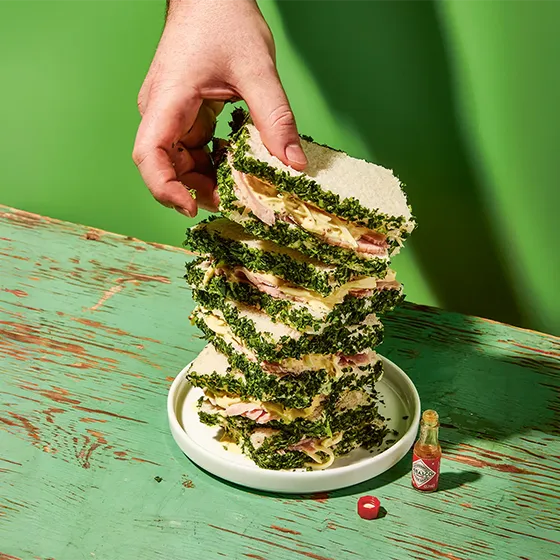If you’re the health conscious type, you might have seen her name pop up on a social feed, or heard a friend talking about her ‘method’, but who is the Glucose Goddess, really? She’s the French biochemist, bestselling author, foodie and self-proclaimed activist sharing the intel you need to slash your blood sugar – who occasionally eats ice cream in bed.
See, she really, really likes carbs, but she’s figured out that they need to be handled with care. “I used to believe that only people with diabetes needed to care about their glucose levels,” Jessie Inchauspé tells LK. “Everyone used to believe that.” But could your body’s glucose response be the vital sign we’re all ignoring?
Mind, body and soul
Jessie used to take her own health for granted. Then, when she was 19, she jumped off a waterfall and took a bad landing. “The pressure from the water created a shockwave up my spine, and each of my vertebrae compressed, way up to my second thoracic vertebra, which exploded into fourteen pieces,” she explains.
After risky but essential surgery, her body recovered quickly. “But then my mind and soul were the ones that needed rehab,” she tells us. “I felt disconnected from reality. Something was wrong. But I didn’t know what.” Diagnosed with depersonalisation-derealisation
disorder, Jessie wanted to dig deeper: to understand how her body worked so she could take back control of her health.
My thinking went like this: my DNA created my body, so if I can understand my DNA, I can understand my body
She landed an internship at 23andMe, a genomics and biotech startup specialising in DNA testing. Three years later, the company launched a research trial using continuous glucose monitors. A CGM is a small electronic device worn on the back of your arm, which tracks glucose levels in real time and sends the readings straight to your smartphone. Created to replace traditional finger prick monitors, the technology was a game changer for people with diabetes.
Jessie didn’t need to be asked twice. Still hungry for insight and waiting for that penny-drop moment – whatever form it might take – she signed up to take part. What she learned turned out to be transformative. Jessie had fi nally found the inside intel she had been
searching for. As she mapped the zig-zags and curves on her phone screen to her daily experiences, Jessie began to link her state of mind to her glucose levels. “My brain fog (which I had started experiencing since my accident) often correlated with a big spike, sleepiness with a big dip,” she explains. “Cravings correlated with a glucose rollercoaster – spikes and dips in quick succession. When I woke up feeling groggy, my glucose levels had been high throughout the night.”
She began to experiment, cross-checking her theories against published studies. The data was clear: to feel her best, she had to avoid big spikes and dips in her glucose levels. By learning this, she cured her brain fog and curbed her cravings. “For the fi rst time since my accident, I began to feel truly well again,” she tells us. “So I started telling my friends about it. That’s how the Glucose Goddess movement began.”

The science of sugar, made simple
You don’t need to have gone through an experience like Jessie’s to understand what a glucose rollercoaster feels like: if you wake up feeling foggy, then lurch from sugar fix to caffeine hit, you’re probably already riding one. “These symptoms are our body speaking to us, trying to tell us about the glucose rollercoaster happening within,” Jessie explains.
We need glucose: every cell in our bodies needs it to function. And while the body can make it when supplies are scarce, the main way we get it is – of course – by eating it, in the form of starchy foods like bread, pasta, potatoes and rice, and sugary foods like fruit and sweets. We’ve evolved to crave it, to cram as much sweet, calorie-dense goodness into our mouths as we can get while the going’s good. For our evolutionary ancestors, food scarcity made glucose availability a matter of life or death.
In a way, it still is. But with sugary, starchy foods now on tap round the clock, we’ve got a different problem on our hands. We’re delivering too much glucose into our blood, too quickly – and that’s when bad things start to happen.
About 80% of us experience glucose spikes, visible as a sharp peak on a CGM graph (we’re aiming for gently rolling hills). Jessie defi nes a spike as an increase in blood glucose concentration of more than 1.7 mmol/L after eating, but many ‘healthy’ people spike above 11.0 mmol/L, pushing them into diabetic territory even if their fasting glucose levels are ‘normal’.
From the moment a human is born, they slowly ‘cook’ via this glycation… this shows on your skin
If you’re interested in tracking your own glucose response, initiatives like Lingo (hellolingo.com) and ZOE (zoe.com) provide access to CGM devices, with bespoke guidance to help you understand the real-time impact of food on your body.
Failing that, simply take a moment or two to tune in. Glucose spikes are linked with a laundry list of symptoms and conditions, from the tiredness, brain fog, cravings, ‘hanger’ and ‘food comas’ many of us take for granted, to premature ageing, inflammatory skin
conditions like acne, eczema and psoriasis and hormonal issues like endometriosis and PCOS. Over time, repeated spikes can cause glucose levels to remain elevated, raising your risk of chronic disorders like type 2 diabetes and dementia.


























